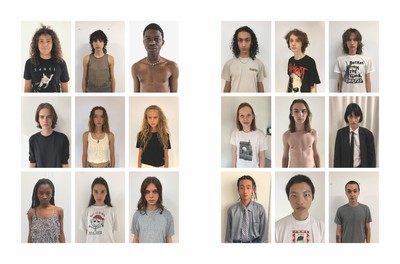When you want a different model, go to Midland.
By Jonathan Wingfield
Portrait by Ethan James Green
When you want a different model, go to Midland.
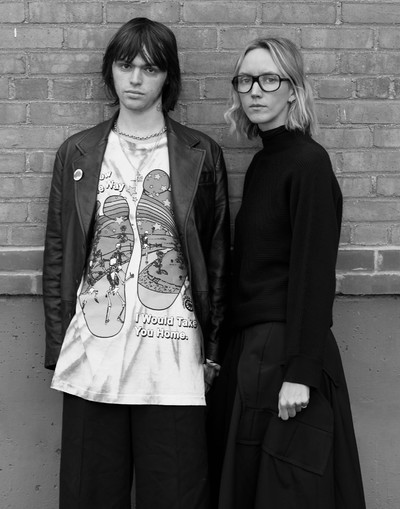
In September 2018, New York brand Vaquera’s show featured a young man galumphing down the catwalk looking like he’d escaped from a low-budget horror movie. Walter Pearce’s zombie walk became a sensation and an instant symbol of one of the more radical changes the industry has recently undergone: fashion is changing its face, literally. Many would point to Alessandro Michele’s arrival at Gucci in 2015 as a turning point – his shows and ad campaigns often assembling a joyful collective of waifs and strays, both culturally and physically oceans away from the models presented by his more conventionally minded, ‘sex sells’ Gucci predecessors – but scratch the surface and the change has been happening in pockets of the industry all over. Ultra-real casting has become ultra-real.
At the heart of this movement is Midland, a casting and management agency, founded in 2016 by Walter Pearce himself and Rachel Chandler, which emerged from New York’s art-fashion-music-hybrid scene centred around Shayne Olivier’s Hood by Air downtown collective-cum-brand. They have since established a client base across the fashion world that includes Marni, Comme des Garçons, Fenty, Telfar, Eckhaus Latta, and, since 2017, Gucci, where Midland now has a hand in casting its own ‘discoveries’ alongside the likes of Iggy Pop, Sienna Miller, and indeed, Walter Pearce himself (in cute displays of public affection with his now real-life girlfriend, Gucci mainstay Unia Pakhomova). This change in the faces of fashion has sometimes been dismissed as little more than the extreme and the odd, but when objectively viewed, it’s another stage in the wider ambition of bringing more diversity into the industry. By turning the spotlight on people from a greater variety of backgrounds in a greater range of shapes and sizes, both young andnold, the classically fashion-beautiful and the more unconventional, Chandler and Pearce are driving change and challenging long-held preconceptions about what constitutes ‘normal’. More than ever, casting is becoming about character – ours for starters.
Let’s start with your respective back stories. Rachel, how did you start out?
Rachel Chandler: I was 18 when I moved to New York, working first as a photo assistant, then shooting pictures myself. I was totally miserable. Poor Walter has heard me say this so many times: I really didn’t like shooting fashion pictures, although there was something about it that kept drawing me back. I was always looking for people to shoot, and that’s how casting came my way. I just started finding my own people. Then, because I was a member of the fashion community, different designers started asking me for casting help. They had seen the women in my shoots and were like, ‘They’re interesting, would you help us on a show?’
So, you were already casting off the beaten track from the start.
Rachel: I was basically doing street casting. We’re talking four to six years ago: Instagram existed, but it wouldn’t have occurred to me to use it that way – approaching someone via DM – so it was people from the street or people in my life. People I remembered from school or the girl who works in the local coffee shop. I’m quite outgoing, so it came naturally to seek people out.
An extension of your social interactions.
Walter Pearce: Yes, and she was a big DJ as well. That played a part.
Rachel: I was DJing in New York at the Beatrice Inn. At one point, I had two nights a week there. So I was meeting a lot of people because of that, while during the day I was shooting for magazines like Dazed, Purple and Double.
When you look back at your photography, was it more an exercise in documenting the casting?
Rachel: If I was to dig out those shoots, I think you could identify my casting eye from the beginning, for sure. Even if I wouldn’t be happy with the photographic aspect.
And what’s your story, Walter?
Walter: I was born here in the city and then I grew up upstate. I would take the train multiple times a week into the city to do internships. When I was 14 or 15, I interned for DIS magazine, which is more of an art platform these days; they recently curated the Berlin Biennale. They did all these very tongue-in-cheek fashion shoots. They were the coolest thing to me at the time. The first casting job I ever did was for them, going out and finding the most bizarre looking people to be in their weird satirical shoots.
Were they operating within the fashion industry at the time?
Walter: They were, in a way, because they were friends with designers like Telfar and Shayne [Oliver] from Hood by Air. So, they would do collaborations with them. The whole point was that it was half-kidding and half-serious. Through them, the following year, I interned for Hood by Air. Shayne and Ian [Isiah] liked me, and they had me start street-casting for them. I was so bad at it to start with.
‘The first casting job I ever did just entailed going out and finding the most bizarre-looking people to feature in these weird satirical shoots.’
What made you bad?
Walter: I was thinking more about what they would want, rather than what I would want. You learn quickly what your eye is, but it takes a while. I was in charge of casting the Hood by Air show when I was 18, while Rachel was in charge of casting other stuff for them, too. Then, the following year, I did it all by myself. Rachel and I were working on it together, but didn’t know each other. Rachel has a very strong taste in women, which they liked. Plus, I didn’t even know how to talk to [model] agencies; I had only done street casting, so it would have been literally impossible for me to formally cast a show at that time.
Rachel: I think they felt that the women weren’t polished enough. So that was when I had Daiane Conterato open the show – she is one of Dries’ muses and a much more polished kind of model. Her agent, who was petrified, came with her to the show, to make sure it wasn’t too weird. Daiane came out in a fur coat with natural hair and make-up, and her agent hugged me after the show and was like, ‘Phew, there’s no weird shit going on!’ Hood By Air never did anything in the standard way. Shayne just wanted everyone’s ideas; he didn’t really care where they came from.
Walter: I think there was a transitional period, where there was a casting director, and then there wasn’t, and then there were like nine of us.
Rachel: When Shayne did Helmut Lang, Walter worked on that with Samuel Ellis.
Walter, did you see casting as the start of a career, a role that you could define yourself by?
Walter: Being 19, I didn’t even know it was a job. It certainly took me a long time to see it as a career. I still considered myself a photographer at that time. I’d been to FIT and done photography for a year, then I entered an honours programme, but dropped out – or got thrown out, depending on who you ask.
Rachel: I have this picture of Walter in my phone from 2015. I was living near FIT and I was driving by. Walter was running in the street and I was like, ‘Oh, it’s the kid from Hood by Air.’ So I stopped and wound down my passenger window to take a picture of him. At that time, we were both fully engaged with Hood by Air, but we just had such different lives. We are almost 10 years apart.
What was the process of you guys coming together and starting Midland?
Rachel: I just asked him if he could do it with me. We started Midland in September 2016. Walter was working for Hood by Air that year by himself. And at that time I was getting asked more and more by other designers to help out.
Walter: And I was getting asked by people to do editorials. But I didn’t even know what that meant.
All linked to the Hood by Air scene?
Walter: Yes, friends with the brand, and people who liked that whole scene were asking me to street cast.
Rachel: Around that time, Francisco Costa asked me to help cast for Calvin Klein. That was a moment for me when I realized this was something that’s untapped. Shayne is my peer, so for him to value my eye was flattering and exciting. But then to have somebody who is not in my social circle ask me to do it, made me think that I wasn’t fully realizing my capabilities with this. Another thing that was happening was that the people Walter and I found for Hood by Air were getting signed by model agencies.
How did that make you feel? Given that you had discovered them.
Rachel: We were happy for them, but I was also thinking, ‘Maybe if the agencies are signing them, there is something here from a financial standpoint.’ So, I called Walter one day, and I was literally half joking, but I said, ‘Shall we start a modelling agency together?’
Walter: I was in my basement at the time, in Bed-Stuy! I just said, ‘Sure!’
Rachel: The casting, I think, we both viewed as more of a creative thing. But we decided that we would also start representing people we were finding. I knew enough about fees and I thought we could do it. What I also noticed was that a lot of the people we knew who got signed, felt like the agencies were taking them on because they wanted to be cool. When they arrived at the agency, they would do one big flashy campaign and then never work again. So, the idea behind Midland is that if we take you on as a talent, there are no strings attached. No financial strings either side: we don’t do cards; we don’t do books. If there is someone on the street who wants to model, we can just put them on the website and see what happens.
‘People we’d found felt model agencies were taking them on because they wanted to seem cool. They’d do one big campaign then never work again.’
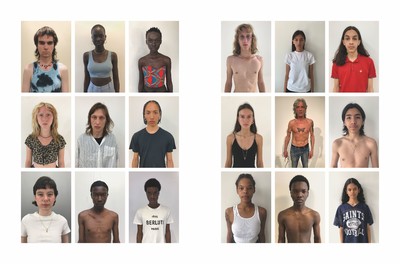
What generally happens?
Rachel: We have existed for three years and I’d say we now have half a dozen people who are living off modelling, working enough to pay rent in New York. That is really cool. As for the casting side, I don’t think either of us expected it to take off the way it has, but when we named the agency, we consciously named it Midland Management and Casting, with the idea we would do both.
How did you come up with the name?
Walter: It’s named after the city in Texas where my dad lived. It’s the shittiest city ever.
Rachel: I lived in the Midlands, in England, when I was a kid. I think the Midands in England in the mid-1990s and Midland in Texas might be comparable in their shittiness.
Walter: It’s funny because it sounds really pretty, but it was where [ex-president George W.] Bush grew up.
Rachel: [To Walter] You were really struggling with the name, then your dad said that the kind of kids we were casting were the kids who would have got the shit beat out of them if they were at his school in Midland, Texas. At that point, I knew it was the perfect name.
Did the aspiring models who you approached understand the distinction between the Midland offer and that of other more conventional model agencies?
Rachel: Well, what I saw three years ago with them getting signed and doing nothing is happening less now. The big agencies are getting better at cultivating that type of model, but I still think that Midland is a great place for people who maybe don’t even want to model that much. Like if you are a musician and you don’t want to be told every day to go to a casting, then it’s ideal.
Walter: A lot of these kids are just as happy working with smaller brands like Telfar that don’t even pay that much, because they feel like it is fun and they become part of a cool community. They
are not concerned with being booked for some huge campaign.
What were the practical realities of the casting work really taking off for you both?
Walter: I was getting stuff in my inbox that I couldn’t handle. Also, at this point, clients would be like, ‘OK, we’ll pay you $3,000 for global usage’, and I didn’t know what any of that meant.
Rachel: When we started Midland, our agent Sofie [Geradin] helped because – and I don’t want to offend Walter here – he was young; he was a bit of a wild card. Sofie saw how talented he was, but she also saw how much he was going out. I think she imagined how we could turn that into something, she just wasn’t sure what. When I came along and we joined up, I was more established in the industry already in my own way. So, when we joined together, Sofie saw that as something she could invest in.
Walter: I kept fucking up and then doing something really good. Doing really good work and then fucking up again. Sleeping through a giant meeting. People kind of put up with it, but were definitely on the edge of their seats. Then I just pulled it together.
What prompted that?
Walter: It was just natural. Going out is for idiots. Most parties are stupid and I now like working better than going out. I’m lucky I learned that when I was 22.
Rachel: We have a good thing between us and obviously it is a bit of marriage. There were times when I was like, ‘Gosh, I wish we were flying to Milan separately, and not in little seats next to one another again.’ But I think 90% of the time we have figured out how to get the best out of each other.
Is there a natural division of the work between you?
Rachel: For the casting work, people want both of us together.
Walter: I do Telfar alone because I’ve been doing it for five years, but pretty much everything else we do together.
Rachel: When we do Marni, we sit there together from the first day to the last. Because there is something about the combination of the two of us that people want, not just one or the other. The reason it works is that I understand Walter’s eye and he understands mine, so if we get a job where it’s clearly one person over another, then one will take the lead and the other will be there to support.
How do you define a Midland model?
Walter: Every client is different. We get hired for our eyes. We are quite bespoke in a hipster kind of way, like we don’t take on more clients than we think we could handle. The reason you hire some casting directors is because you get a certain type of girl, but with us you get something completely different, based entirely on your brand identity or whatever your project is.
Rachel: I mean, it is harder for us. There is an infrastructure between agents that exists; like an agent will say, ‘Well, you used her for this, why not for that?’
Walter: And we’ll be like, ‘Because she was right for that and not for this.’ Which isn’t what they want to hear. It is getting easier though, because our client list has expanded a lot. We used to have two clients agents would get excited about, while the others were all a bit cooler and younger.
Rachel: People are getting used to how we work and that our approach actually respects individuals above all else.
Walter: That, and they know we’re not going to change our minds!
‘Walter’s dad said the kids we cast are the type who’d have got the shit beat out of them at his school in Midland, Texas. So it was the perfect name.’
How often are you walking along the street and see someone and think, ‘I’ve got to stop them’?
Walter: It happens. You just know right away. You do it without thinking about it. It’s the same as if I see someone randomly on Instagram. One evening, after I’d been out to dinner, I got back pretty drunk, and was on Instagram Stories; this girl I barely know posted this thing, which I screenshot, because this interesting-looking boy was in it, and I circled him in red, so when I woke up I would remember. When I saw the picture the following day, I was like, ‘Wow, good call!’ I texted the girl and two days later he was with us. He ended up doing a huge campaign.
Instagram makes your extended social circle infinitely larger.
Walter: The social circle is never ending. To be honest, I don’t really look for people on Instagram to cast; if anything, if I’m travelling to a place where I am doing casting, I might announce, ‘Casting in Paris – DM me your picture.’ I sometimes dig around online, but it is less productive. Instagram can be both an interesting tool and a distraction.
Rachel: We never count on it for a job; if we get someone from there then it is great. Like a bonus.
Walter: There are cool guys on there.
Walter, you went to Chengdu with stylist Vanessa Reid and cast local people for a System shoot. The people you cast were obviously very specific to that location. Do you often go out on ‘location-centric’ trips?
Rachel: It is great when that happens for a client or a story, because then we have a clear focal point. We have done trips to European cities together. And we’ve done China and Japan, too.
Are there places that are disproportionately successful for you?
Walter: Yes, Madrid, but don’t print that! Everyone will end up going there!
Rachel: We weren’t expecting it at all. Not because we didn’t think Madrid was hot. But it was just amazing.
Was it local Spanish people you were particularly drawn to, or internationals living in Madrid?
Rachel: Both, Spanish and some students living there. With editorial projects, we get to flex a little more, because you’re not dealing with issues of fit, or whether people can walk on the runway.
We find all these people in places like Madrid, and if they don’t get selected for advertising, they can still be great in editorial contexts. Photographers are now starting to know who we are so we can send these kids to shoot with them.
What other differences for you are there between casting for editorial, for clients, for shows, or for campaigns?
Rachel: Shows are the most stand-alone, because the people we cast need to fit the samples.
Walter: Then again, Vaquera, for example, they don’t care about sizes because they are like punk rockers. Marni is the opposite: very tailored, so if we want to bring in some different shapes of people, it’s easier if we present them way ahead of time. A few of our clients are willing to make the piece for the specific person.
Rachel: Walking on the runway is really scary; it’s not for everyone. There is a level of professionalism required. The point of the show is not for people to leave and remember the weird way a person walked down the runway. They are there to see the show.
That said, Walter, you famously cast yourself in that Vaquera show, and then you walked like a zombie, becoming a headline-grabbing highlight of the season. Discuss!
Walter: The ‘zombie walk’ happened naturally as a collaboration between my casting work and the brand. It felt natural and fun with the clothes and the cast of characters we were putting in them.
Things took off for Vaquera in terms of the brand having a signature walk.
Rachel: They put Walter’s face on a sweatshirt once…
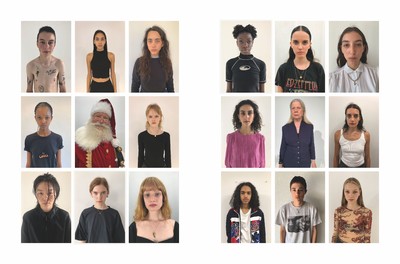
This season, Leon Dame produced another stand-out moment, strutting on the Margiela catwalk. Why, when some brands are spending millions orchestrating lavish ‘visual spectacles’, can something as modest (in budget) as walking on the catwalk capture people’s attention so successfully?
Walter: Leon Dame’s walk was cool and affected people for the same reasons as the Vaquera walk – a runway show is a performance, and the models are the stars. I do think they were kind of inspired by me though. I don’t blame them; it’s a cool walk.
How does the conversation between you guys and a runway client play out?
Rachel: In an ideal world, we get research. It could be anything, not necessarily people, but paintings. The best example would be the research we get from Chris Simmonds for Gucci. We also get extensive documents for Marni, from both Francesco [Risso], as well as Camilla [Nickerson, styling consultant], six weeks prior to the show. Sometimes we cast directly to the reference, other times it’s just a starting point that takes unexpected turns along the way.
But the point is, you are responding to something tangible.
Rachel: Right, and then the more you work with a client, the more natural and intuitive it becomes as the seasons go by. I think both our brains work in a way that when we see a visual reference we
immediately think of certain people. In doing that, we can help brands find their identities through casting.
Gucci’s advertising casting often seems specific to the setting, the concept. They’ve become a client of yours more recently, right?
Rachel: The first thing we did with them was the Dapper Dan campaign, which was shot in July 2017. That was a specific context, because we cast in Harlem. Gucci will generally do specific reference casting and each campaign is a surprise. From a practical perspective, it’s always different because the location changes.
And then there’s Marni, whose brand identity you’ve really been instrumental in shaping through casting.
Rachel: For Marni, our eyes are open, but so are Francesco’s, and his heart is open, too. He is willing to see anything and he doesn’t care if it is wrong or where it comes from. I think that’s the reason we get amazing results together.
What about Eckhaus Latta in New York? Those shows are one big exercise in casting.
Rachel: Eckhaus was the first brand after Hood by Air to ask me to take over their show casting. They had already established a strong direction in a very organic way, from within their own community. But they were doing everything themselves – designing the whole collection and then casting the show – so they needed someone to take on this role. I kept their friends and family in the fold and then introduced new people. Each season we build on the same formula: who are the new friends? What models would we like to work with? Plus, fans of the brand often reach out. Hari Nef is someone they worked with early on and this season she came back.
What makes Eckhaus such a good fit for Midland?
Rachel: It’s genuine, so it looks and feels believable and sincere. Clients sometimes ask for us to create this sense of family with the casting, but if it’s not real it will look silly. In those cases, we
strongly discourage it. You can build a brand identity entirely through agency girls and boys, but sometimes people feel they need to jump on the street-casting train. We are just as excited and inspired to do an all-model casting, if it’s right for the brand.
So much is changing in the industry and in society. Do you think the industry is genuinely receptive to very different types of models? Or is it just a moment, a fad?
Walter: I think the industry is genuinely more receptive. Sometimes, what is beautiful is beautiful to everybody; sometimes to just some people; sometimes it is only beautiful to me or to Rachel. But you can tell by the success of our business that people and brands are clearly more open to these types of more ‘aggressive beauty’.
Rachel: We were just here to propose a point of view and the response has been a strong one, so it is indicative of something bigger than us. And I think wherever we are in the state of the world, it will certainly be hard to swing back from. If you look at it that way, it wouldn’t undermine what we do to say it’s a fad, nor would it be looking too much into it to say it’s the new way forward. We provide a service that will be relevant in other eras.
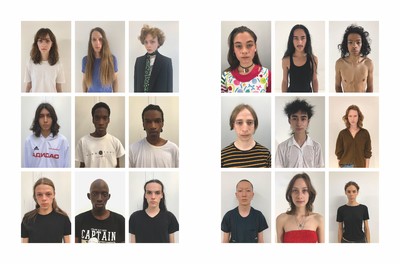
If the 1980s were about athleticism, and the healthy-looking supermodel, what do you think the type of models that you guys are pushing into the mainstream says about the current era?
Walter: I think it is a reaction to the sociopolitical climate. I think that people are tired of the ‘old days’. Kids don’t think that is cool any more. If you are not a brand putting out imagery that is reflective of what the kids – the people who are buying clothes – want to see, then those people will look elsewhere. Because there are a million choices now. Even if there are not a million choices on billboards, there are a million choices on your phone. When you’re living through the sociopolitical apocalypse that we currently are, and you have all these options to choose from, then you’re going to choose the one you want. People are no longer going to accept the boring athletic type… right?
Rachel: And that doesn’t only apply to kids. Marni is actually a good example of a brand that is not for kids. It’s for women and for men. It is not for children. I think to have the reception we have had at Marni is really encouraging. To have both Comme des Garçons and Marni welcome us in proves that this isn’t simply about youth. It’s about all of us needing to see something more, something different.
Is that driving a broader consideration of what beauty is, both within and beyond the industry?
Rachel: Well, interestingly, we don’t do much beauty work. We’ve never done a beauty campaign, although I think that would be fun to do.
Walter: The beauty industry is the final frontier. As beauty brands are owned by bigger entities, you have to break more barriers than just a creative director saying, ‘Wow, she’d be cool in the campaign.’
Midland shapes what is new, unexpected and different, but are there models that you would like to see come back?
Rachel: Casting Deborah Shaw for Mugler was an amazing honour. I grew up reading all the magazines and knowing all the models, so if someone has the will to get back out there, I’m keen.
Walter: I think it’s great to bring people back, but I’ve never idolized models like that. They are not the goddesses some people think they are.
Rachel: I actually think when girls idolize models, it’s kind of fucked up.
Walter: The closest thing I’ve got to being obsessed with a model is my girlfriend [Unia Pakhomova]. She was my friend for five years, and I thought she was crazy looking. I tried to book her for Hood by Air from her local Russian agency when she was 16, but Hood by Air had no pull.
Rachel: And then they started dating a year ago…
…and you both got booked for the Gucci campaign.
Walter: She has been doing Gucci since Alessandro started, so basically her whole modelling career. And they just thought it was funny to have us both in the campaign.
Diversity and inclusivity are driving fashion’s current dialogue, with casting heavily in the spotlight. Do you feel compelled to be part of that dialogue?
Rachel: I think with the background we come from, it was not even a conversation, it was just a given.
Walter: It is delicate, and you have to handle it appropriately, so that people are present, but not in a tokenistic way, or in a way that might compromise a designer’s vision. But as Rachel said, I never felt it was an issue for us.
Rachel: If you hire us you know it won’t be anything else. We would never accidently cast all white people because we ‘weren’t thinking’. It does happen to people. Not us. When you are dealing
with big companies you have a responsibility to always be conscious.
Walter: Something we discovered recently is if something needs to be said, it is fine if we say it. Clients are not going to get mad at us for saying it. I think a lot of the time these things happen because no one says anything. But if we notice something, we will definitely say it. It’s called being a responsible adult in the fashion industry!
Finally, with your Midland hat on, name a movie with impeccable casting.
Rachel: Casanova.
Walter: I’d say The Addams Family.
